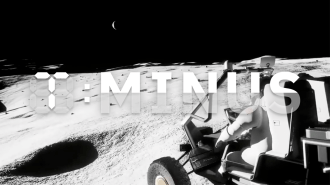This is T-Minus, where we count down the biggest developments in space, from new rocket launches to discoveries that advance our understanding of the universe and our place in it. Humanity is reaching new heights in space exploration. Make sure you’re part of the journey by subscribing here.
Washington’s request for “moon time”
Time is relative — gravity, speed, and acceleration can all affect the rate at which it passes.
As a result, if you set two clocks, one on Earth and one on the moon, to the exact same time, they wouldn’t stay in sync for long — for every 24 hours that passed on the Earth clock, the moon clock would tick off 24 hours and 58.7 microseconds.
That’s only a slight difference, but it could become a problem as activity on and around the moon increases in the future, so on April 2, the White House directed NASA to develop a time standard for the moon, called “Coordinated Lunar Time” (LTC), that could be implemented before the end of 2026.
“US leadership in defining a suitable standard — one that achieves the accuracy and resilience required for operating in the challenging lunar environment — will benefit all spacefaring nations,” wrote White House officials in a memo to NASA.
SpaceX’s “Bandwagon” launch
In 2019, SpaceX announced a dedicated ridesharing program that would allow multiple customers to book space for their payloads aboard a single rocket. This meant they could split the cost of the launch with others, giving them a cheaper way to get their payload into orbit.
All 10 rideshare launches so far have placed payloads into sun-synchronous orbit, which is almost directly above the Earth’s poles. In August 2023, though, SpaceX announced plans to expand the program to include launches that place payloads into mid-inclination orbit, at about a 45-degree angle to the equator, providing a different kind of coverage to operators.
“It’s a way of meeting the demand for the second most commonly asked orbit,” Jarrod McLachlan, director of rideshare sales at SpaceX, said at the time of the announcement.
On April 7, the first of these new rideshare missions — Bandwagon-1 — lifted off from Kennedy Space Center, successfully deploying 11 spacecraft for the company Capella Space, South Korea’s ministry of defense, and other customers into the new orbit.
NASA’s new lunar ride
Through the Artemis program, NASA plans to not just return astronauts to the moon for the first time in more than 50 years, but establish a sustained presence on the lunar surface — this will give it the ability to develop the kind of tech needed for future crewed missions to Mars.
NASA has now awarded three companies — Intuitive Machines, Lunar Outpost, and Venturi Astrolab — contracts to spend about a year developing a lunar terrain vehicle (LTV) that could be driven by Artemis astronauts on the moon or controlled remotely from Earth.
Once this phase of development is over, NASA will pick one of the companies to deliver its LTV to the moon for a demonstration.
“We look forward to the development of the Artemis generation lunar exploration vehicle to help us advance what we learn at the Moon,” said Vanessa Wyche, director of Johnson Space Center. “This vehicle will greatly increase our astronauts’ ability to explore and conduct science on the lunar surface while also serving as a science platform between crewed missions.”
We’d love to hear from you! If you have a comment about this article or if you have a tip for a future Freethink story, please email us at tips@freethink.com.
